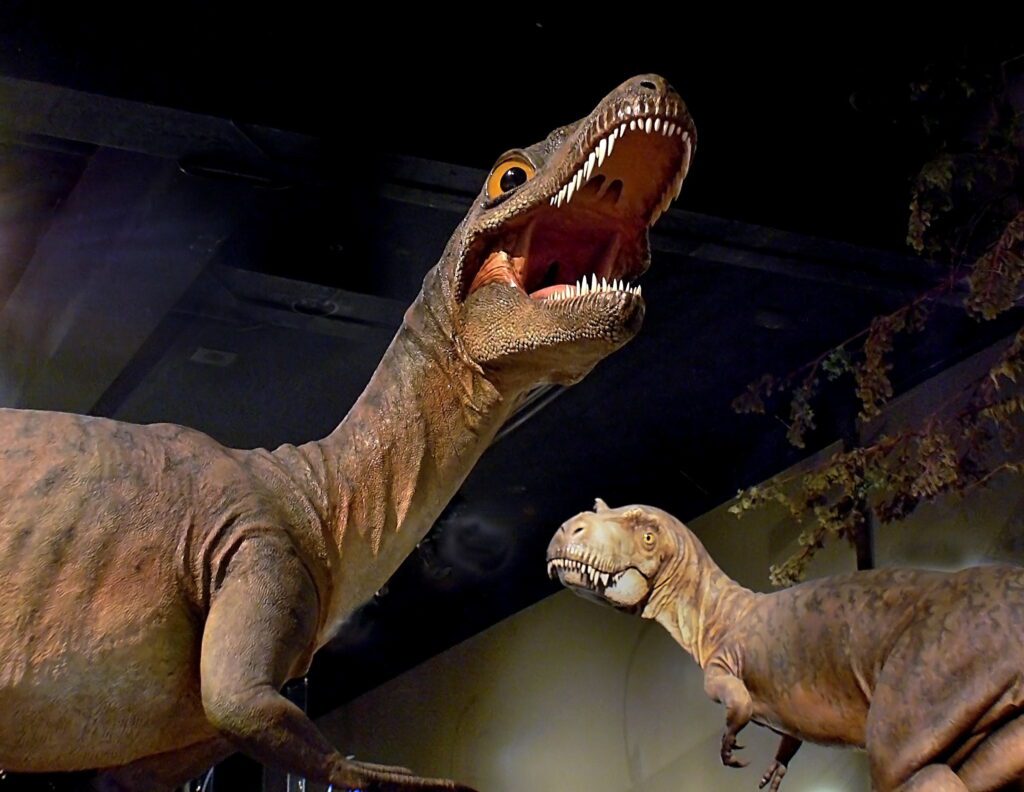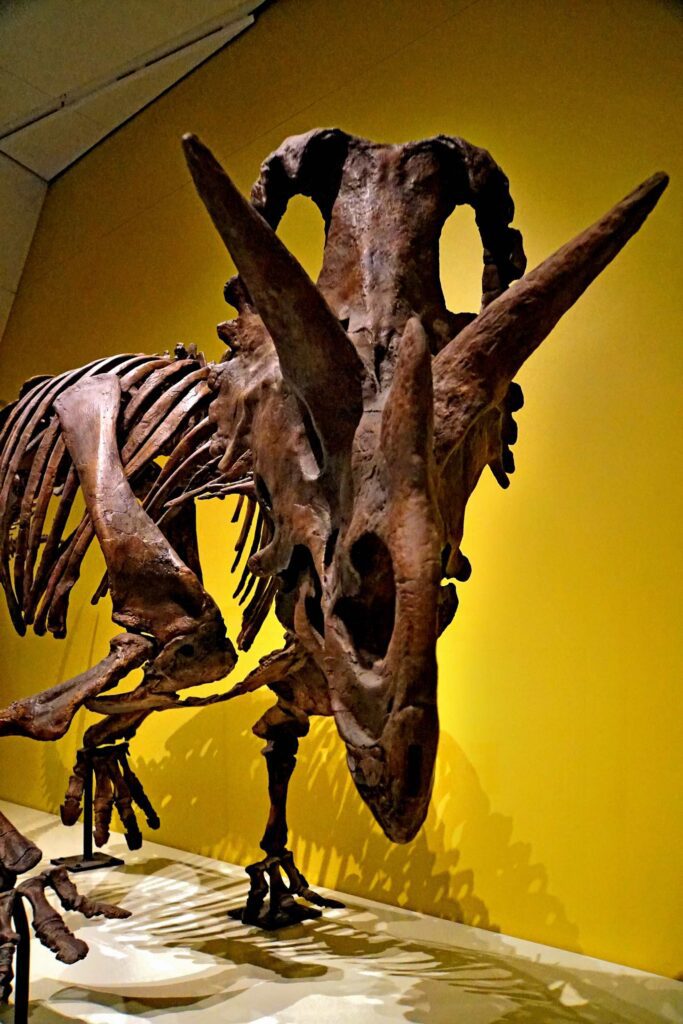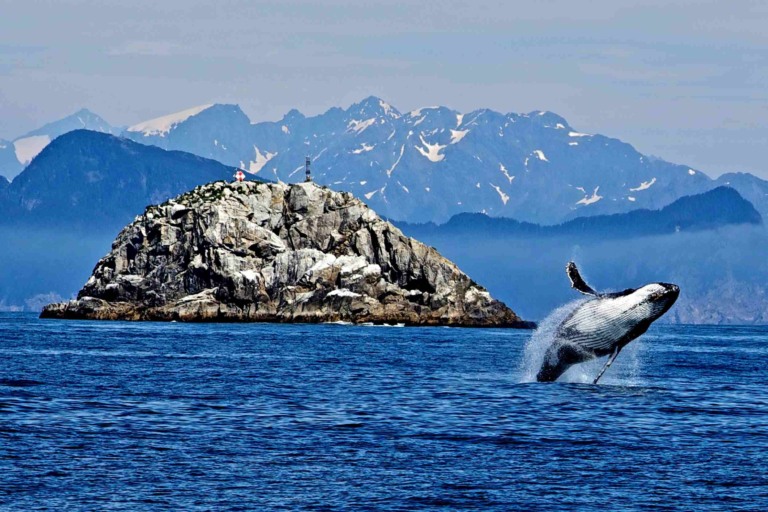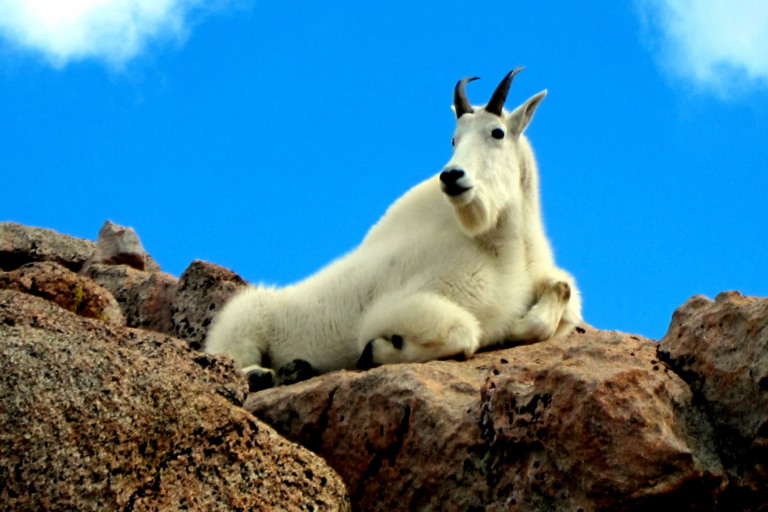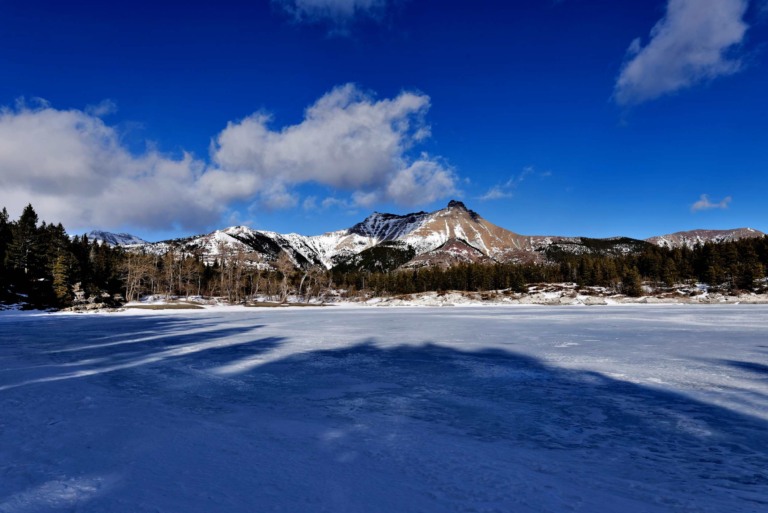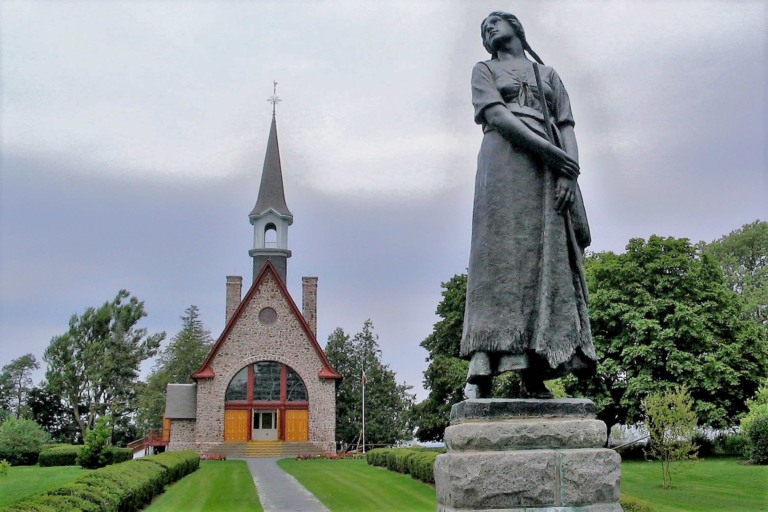Dinosaur Provincial Park is on the list of World Heritage Sites by UNESCO. It is 48 kilometers (30 miles) northeast of Brooks and two hours east of Calgary, Alberta, Canada. The park is in the Red Deer River valley, which is known for its beautiful badlands and large number of dinosaur fossils. People know that the park is one of the best places in the world to find dinosaur bones.
Dinosaur Provincial Park
Dinosaurs of 58 different kinds have been found in the park, and more than 500 of them have been taken out and put on display in museums all over the world. It was named a UNESCO World Heritage Site in 1979 because of its famous fossil collection of nearly 500 species of life, from tiny fern spores to big dinosaurs that ate meat.
Tyrannosaurus Rex
The Tyrannosaurus Rex was one of the largest and most dangerous animals that has ever lived. It didn’t exist anymore 65 million years ago. Even though Tyrannosaurus Rex is one of the best-known dinosaurs, paleontologists have only found a few fossils of it that are still in good shape.
Paleontologists have found most of T. Rex’s bones. T Rex fossils have been found in the states of Montana and South Dakota, both of which are in the Northwest. T. Rex fossils have also been found in Alberta, Canada. The discovery of T. Rex is big news. The T. Rex lived during the Late Cretaceous, which was from about 90 million to 66 million years ago. Till then, the dinosaur T. Rex survived.
Dinosaur Provincial Park Visitor Centre
There are displays about dinosaurs, fossils, and the geology and natural history of the park at the Dinosaur Provincial Park Visitor Center. There is a theater, a gift shop, and a lab for cleaning fossils. In the summer, there are events that anyone can go to.
John Ware’s Cabin is a restored cabin from the early 1900s. It was used by John Ware, an African-American cowboy who was an important part of the history of ranching in Alberta. Some summer days can be spent in the cabin, which is close to the visitor center.
Dinosaur Provincial Park Canada
Roy Fowler was the first park ranger. He was a farmer and fossil hunter who lived from 1902 to 1975. The park opened on June 27, 1955, as part of Alberta’s 50th Jubilee Year. The goal was to make sure that the fossil beds were safe. The park was named a UNESCO World Heritage Site on October 26, 1979. Because its badlands and riverside riparian habitats are important on a national level, and its fossils are important around the world.
Dinosaur Provincial Park Alberta
Things found in the park before 1985 had to be sent to museums all over the world so scientists could study them and put them on display. Some of these museums included the Royal Ontario Museum in Toronto, Ontario, the Canadian Museum of Nature in Ottawa, Ontario, and the American Museum of Natural History in New York City, New York State. This changed when the Royal Tyrrell Museum of Palaeontology opened 100 km upstream in a park called Midland Provincial Park, which is next to Drumheller.
Badlands Alberta Dinosaur Provincial Park
The park protects a very complex ecosystem, including prairie grasslands, badlands, and cottonwood trees along the river. It has its own ecosystem, even though it is surrounded by prairies. At dusk, coyotes and nighthawks often call and howl in groups. There are pronghorn, mule deer, and cottontail rabbits in the park.
You could also see prairie rattlesnakes, bull snakes, and red-sided garter snakes. 165 different kinds of birds, like curlews and Canada geese, can be seen in the spring and summer. Some of the most northern types of cactus, like Opuntia and Pediocactus, are in full bloom in the second half of June.
Wendiceratops
Wendiceratops is a genus of herbivorous centrosaurine ceratopsian dinosaurs that lived in Canada during the Late Cretaceous. In 2010, Wendy Sloboda, a Canadian fossil hunter, found a centrosaurine bonebed in the Pinhorn Provincial Grazing Reserve in the County of Forty Mile No. 8, Alberta, south of the Milk River.
In 2011, a group from the Royal Tyrrell Museum went to the site and began digging for fossils. The next year, a lot of extra weight was taken off. In 2013 and 2014, a lot of fossils were found.
Paleontologists David Evans and Michael Ryan named it Wendiceratops pinhornensis and wrote about it in 2015. The name of the species as a whole is a tribute to Wendy Sloboda and a Latinized version of the Greek word ceratops, which means “horn face.” The name refers to where the Pinhorn Reserve comes from.
Wendiceratops was found and named in 2015. It was the second ceratopsian to be found and named. The HISTORY series and companion website, Dino Hunt Canada, told the story of how this new species of horned dinosaur was found, from the ground in Alberta to scientific study and restoration to reconstruction and public display at The Royal Ontario Museum (ROM).
Brooks Alberta Dinosaur Provincial Park
The sediments you can see in Dinosaur Provincial Park’s badlands were laid down over about 1.5 million years during the Campanian stage of the Late Cretaceous epoch. They come from three different types of rock. The oldest rock is at the top of the Oldman Formation, which is on land and at the end of the sequence. It is on top of a full section of the land-based Dinosaur Park Formation, which is on top of the base of the sea-based Bearpaw Formation.
Between 76.5 and 74.8 million years ago, the Dinosaur Park Formation was formed. It has the complete skeletons of most dinosaurs. It got there from river systems that flowed east and southeast to the Western Interior Seaway and then ended up in floodplains and coastal plains.
Dinosaur Paleontology
Dinosaur Provincial Park takes care of a group of freshwater vertebrates that are very different from each other. There are many different kinds of fish, including sharks, rays like the durophage Myledaphus, paddlefish, bowfins, gars, and teleosts. Amphibians include frogs, salamanders, and the albanerpetontids, which are now extinct.
Reptiles include things like lizards, like the big monitor Palaeosaniwa, turtles, crocodiles, and the fish-eating Champsosaurus. The park doesn’t have many fossils of mammals. They come from small mammals like mice and shrews. They have single teeth, jaws with teeth that are broken, and bits of teeth.
There are mammals with eggs, mammals with pouches, and mammals with a lot of tubes. In the park and the area around it, people have found fossils of fern fronds, the leaves and wood of taxodiaceous and cupressaceous conifers, and the leaves of Ginkgo, Cercidiphyllum, Platanus, a Pistia-like aquatic plant, and other plants. Pollen and spores that have turned to stone have also been talked about a lot.
